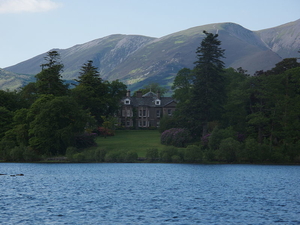In 1771 Dr. John Brown published A Description of the Lake at Keswick (and the Adjacent Country) in Cumberland: Communicated
in a Letter to a Friend, by a Late Popular Writer. Earlier in the Guide, Wordsworth reprints Brown’s twenty-line “fragment” on the Vale of Keswick in its
entirety. Owen and Smyser note: “In his own day, Dr. John Brown (1715-1766) was best
known for an immensely popular work entitled An Estimate of the Manners and Principles of the Times (London, 1757); after his death, however, he became important among writers on the
Picturesque for his brief, but impressive, description around Keswick.”

